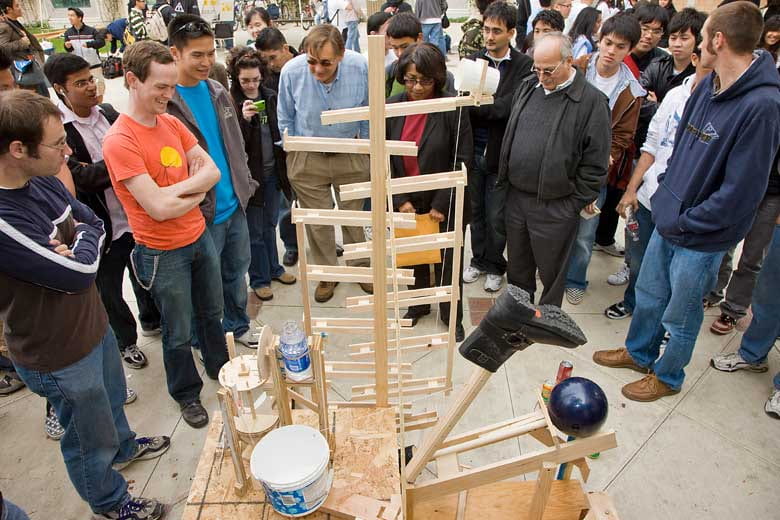New MO for CT, MRI, and PET
Mathematicians develop safer, cheaper method of internal imaging.

University of California and Singapore-based mathematicians have developed an algorithmic method that could slash by nearly 90 percent the raw data needed to create lifesaving medical images via MRI, CT and PET scans.
This could lead to dramatically lower radiation doses and costs, says Hongkai Zhao, chair of UC Irvine’s Department of Mathematics and co-author of a Physics in Medicine & Biology paper on the discovery.
“If we only need one-eighth the time and effort to get the same-quality image, it will be less expensive and less harmful to your body,” Zhao says. “That is what this work is all about.”
Three-dimensional images used by doctors are typically created by layering multiple internal pictures of a particular body part on top of each other – a long-preferred alternative to exploratory surgery.
But such a process is costly, and CT (X-ray computed tomography) and PET (positron emission tomography) scans release radiation – which over time can cause cancer. “The strong rays and light can damage your tissues and cells,” Zhao notes.
He and his former doctoral student Hao Gao, now an assistant adjunct professor of applied math at UCLA, and colleagues realized they could eliminate myriad duplicate background images that don’t move or change.
They utilized a fourth dimension – time – to quickly capture repeated pictures of a beating heart or other organ. They applied a mathematical model recently developed by others known as “rank-sparsity decomposition” to pare out unnecessary background information.
In this way, the researchers were able, with far less data, to construct highly accurate images revealing tumors, clogged arteries and additional serious health issues.
In essence, they took a series of the three-D images and made a highly sophisticated version of a flip-book in order to capture motion. In order to detect irregular heartbeats or breathing, “you need to track motion,” Zhao says. “That’s why you need time. As you breathe, the body changes, and the images change.”
In the past few months, with funding from the National Institutes of Health, Gao – lead author on the paper – has successfully adapted the method and tested it on previously obtained human MRI (magnetic resonance imaging) and CT scans that showed anatomical anomalies.
After mathematically deconstructing the images, he removed extraneous columns of repeated background data and used the remaining subset to craft small movies that still clearly signaled possible problems, including irregular breathing or heartbeat.
The group first discussed the potential of “4-D” imaging about a year ago at a conference. It was already being employed in video security machinery, but not for medical purposes.
They all knew it could be done, Zhao says; it was just a question of how. “Mathematicians don’t always get credit for medical advances, but we actually do quite a lot,” he says.
The researchers are currently seeking collaborators for practical implementation of their work.
Fellow authors on the paper included Jian-Feng Cai of UCLA and Zuowei Shen of the National University of Singapore. UCLA radiologists Dr. Paul Finn and Peng Hu provided background cardiac film for Gao’s work.


